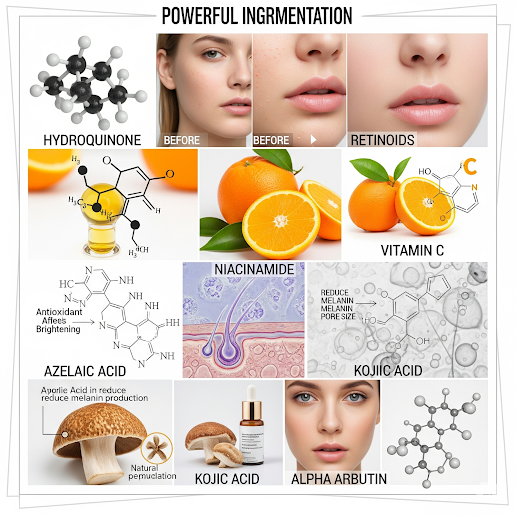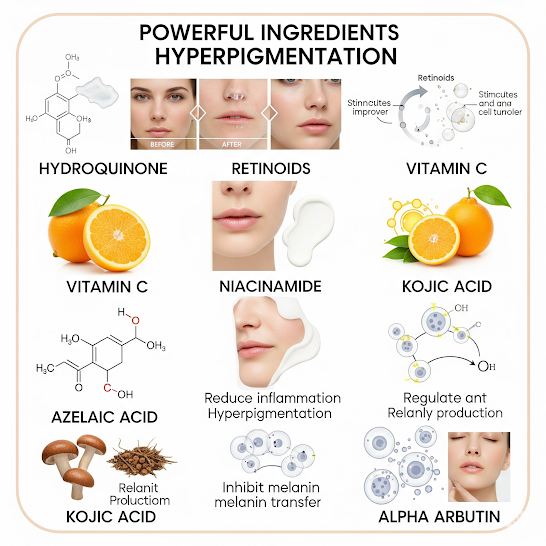What We'll Cover
- 1. Understanding Hyperpigmentation: Freckles, Dark Spots, and Melasma
- 2. Prevention is Key: Sun Protection and Smart Habits
- 3. Effective Management Strategies for Existing Hyperpigmentation
- 4. The Power of Ingredients: What to Look For in Your Skincare
- 5. When to Seek Professional Help
- 6. Related Posts
1. Understanding Hyperpigmentation: Freckles, Dark Spots, and Melasma
Ever notice those darker patches, spots, or freckles on your skin? That's hyperpigmentation, a common condition where some areas of the skin produce more melanin than usual. This can show up in various forms, including freckles (those cute little spots that often appear after sun exposure), sunspots or age spots (larger, darker spots that develop over time due to sun damage), and melasma (often appearing as patches on the face, commonly triggered by hormonal changes). While generally harmless, hyperpigmentation can sometimes affect our confidence and how we feel about our skin.
2. Prevention is Key: Sun Protection and Smart Habits
When it comes to hyperpigmentation, prevention truly is better than cure. The number one culprit behind most forms of hyperpigmentation is sun exposure. Here's how to protect your skin:
- Wear Sunscreen Daily: This cannot be stressed enough! Apply a broad-spectrum sunscreen with an SPF of 30 or higher every single day, even when it's cloudy or you're staying indoors. UVA rays can penetrate windows, so daily application is crucial. Reapply every two hours when you're outside.
- Seek Shade: Especially during peak sun hours (usually between 10 a.m. and 4 p.m.), try to find shade under trees, umbrellas, or hats.
- Wear Protective Clothing: Wide-brimmed hats, sunglasses, and long-sleeved shirts can offer extra protection, especially when you're spending extended time outdoors.
- Avoid Picking at Your Skin: Picking at acne, scabs, or other skin imperfections can sometimes lead to post-inflammatory hyperpigmentation (PIH), leaving behind dark spots.
3. Effective Management Strategies for Existing Hyperpigmentation
If you're already dealing with hyperpigmentation, don't worry! There are several effective strategies to help fade those spots and achieve a more even skin tone:
- Topical Treatments: Over-the-counter creams and serums containing ingredients like Vitamin C, niacinamide, azelaic acid, kojic acid, and licorice root extract can help lighten dark spots over time.
- Regular Exfoliation: Gentle exfoliation, either physical (like gentle scrubs) or chemical (using AHAs like glycolic and lactic acid), can help to remove pigmented surface cells and encourage skin cell turnover.
- Be Patient and Consistent: It takes time and consistency to see noticeable results with hyperpigmentation treatments. Stick with your chosen routine and be patient.
4. The Power of Ingredients: What to Look For in Your Skincare
Certain skincare ingredients are particularly effective in addressing hyperpigmentation. According to experts at the American Academy of Dermatology, effective ingredients include:
- Hydroquinone: A potent skin-lightening agent (often prescription-strength).
- Retinoids (Tretinoin, Retinol): Help to increase skin cell turnover and can improve the appearance of dark spots.
- Vitamin C: A powerful antioxidant that brightens skin and helps inhibit melanin production.
- Niacinamide: Helps to reduce the transfer of pigment within the skin.
- Azelaic Acid: Can help to lighten hyperpigmentation and reduce inflammation.
- Kojic Acid: Inhibits melanin production.
- Alpha Arbutin: A gentler alternative to hydroquinone that can help to lighten dark spots.
When incorporating these ingredients, start slowly and always wear sunscreen, as some of these can increase sun sensitivity.
5. When to Seek Professional Help
For persistent or severe hyperpigmentation, consulting a dermatologist is always a good idea. They can offer a more accurate diagnosis and recommend professional treatments such as:
- Laser Treatments: Various laser technologies can target and break down pigment in the skin.
- Chemical Peels: Stronger acid peels performed by a professional can help to exfoliate and lighten dark spots.
- Microdermabrasion and Microneedling: These procedures can also help to improve skin tone and reduce hyperpigmentation over time.
Remember, managing hyperpigmentation is a journey, and finding the right approach for your skin may take some time. Consistency and sun protection are your best allies in achieving a brighter, more even complexion!



